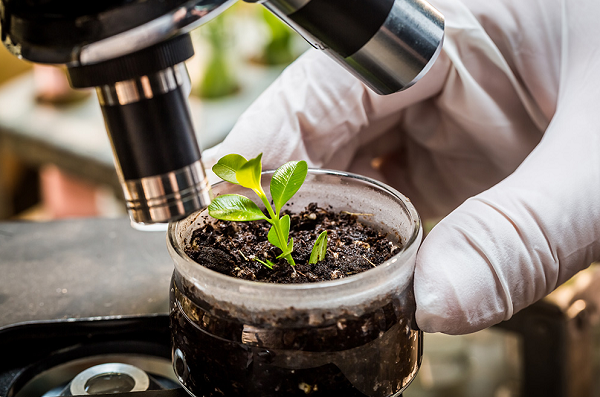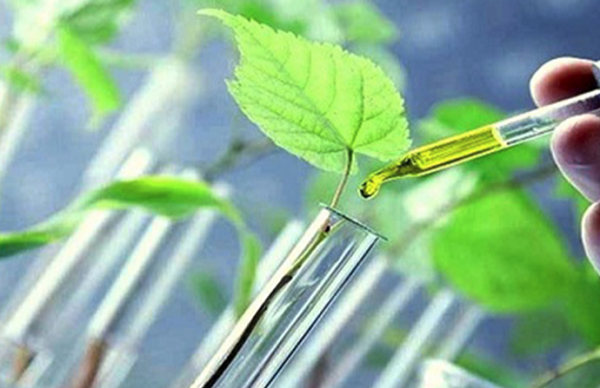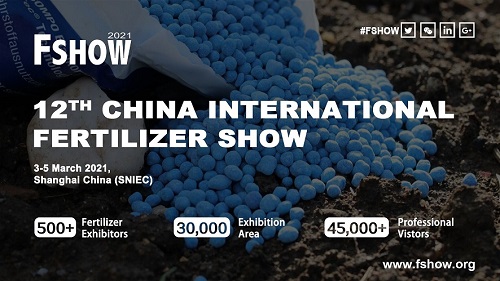
Exhibition time: 17-19 March, 2025 Shanghai, China
 中文
中文

Exhibition time: 17-19 March, 2025 Shanghai, China
 中文
中文
Even if you have not heard the term “biostimulant’” you have most likely seen advertisements for products that would fall into this category. They come with tag lines such as “Biological Plant Activator,” “Plant Health Stimulator,” and “Probiotic for Plants.” They may promise enhanced water uptake and nutrient utilization, increased tolerance to abiotic stress, and increased plant vigor, quality, and crop yield.
The term “biostimulant” is defined in the 2018 Farm Bill as “a substance or microorganism that, when applied to seeds, plants, or on the rhizosphere, stimulates natural processes to enhance or benefit nutrient uptake, nutrient use efficiency, tolerance to abiotic stress, or crop quality and yield.” The EPA currently does not regulate biostimulants, but this is likely to change in the near future. Biostimulants are not classified as fertilizers, nor do they have direct effects on pests. The purpose of these products is to stimulate plant growth and optimize plant health. For various reasons, plants that are thus primed are better equipped to handle both biotic and abiotic stresses. Some biostimulants have also been found to stimulate plants’ natural defense systems, increasing their resistance to pests and diseases.
Perhaps you have wondered, “Should I be using this stuff?” The following discussion addresses the most common questions:

“What’s in these things anyway?” Biostimulant products typically include ingredients from one or more of the following general categories:
Humic and fulvic acids. These acids occur naturally in soils as a result of the breakdown of organic matter.
Protein hydrolysates. These include small peptides and amino acids, the building blocks of all proteins.
Seaweed and plant extracts. Seaweed extract may contain minor nutrients and plant hormones such as cytokinins. Plant extracts may contain substances that can stimulate plant metabolism or natural defense systems. The exact chemical makeup of these extracts is typically unknown.
Chitosan and other biopolymers. “Biopolymers” are specific molecules derived from plant or animal sources; for instance, chitosan is derived from the shells of crustaceans.
Inorganic compounds. These are mineral-based molecules such as phosphites, and minor elements such as silicon.
Beneficial microbes. The action of these products is based on the activity of live fungi and/or bacteria.

“There are a lot of products out there. How do I go about choosing one?”
Read the list of ingredients. If the product contains microbes, you want to see some Latin names. Avoid products that say no more than “proprietary blend,” “beneficial microbes,” “mycorrhizae,” or anything equally vague. Not knowing what you’re getting limits your ability to do your own research about the effectiveness and value of the material.
Choose a product that has been tested by a third party. In other words, someone unaffiliated with the company that makes it. These tests are often done by universities. A company with products that have yielded good results in third party testing will likely publicize this fact.
Look for relevancy in testing. Choose a product that has been tested on the crop (or at least the type of crop) you would like to use it on, in the type of setting you would like to use it in (field or greenhouse).
Focus on the desired outcome. Look for evidence that a particular biostimulant has been shown to produce the results you are looking for. Keep in mind that increased vegetative growth may sound great, but it is often concurrent with a decrease in flower number and/or size, which is not suitable for most ornamentals.
Go to the source. Don’t be afraid to call or e-mail the company and request this kind of information.

“OK, I’ve decided to take the plunge. How should I start?”
Be willing to experiment. Choose a particular crop or a few crops to experiment with.
Make a plan. Have a general idea of the result(s) you would like to see and how you will measure them. No fancy math is necessary: it can be as simple as counting the number of flowers, measuring plant height, or estimating how much of a leaf surface is covered with powdery mildew. Of course, rewards may not always be visible - your goal might be to use less fertilizer or make fewer pesticide applications.
Compare. Always keep an equal number of plants that are not treated with the biostimulant so you can compare them to the ones that are treated. Making this comparison is the only way to be sure that the product made a difference. Other than application of the biostimulant, both sets of plants should be grown under the same conditions.
Start small. Apply the product to a few plants and wait about one week to see if there are any adverse effects such as phytotoxicity.
Keep records. Pay attention to and record environmental conditions, particularly temperature. Little is known about the ways in which the environment affects the performance of many products.
The field of biostimulants is still very new, but it holds great potential. These products present novel opportunities to produce beautiful plant material more effectively and more efficiently. With a little care and attention you can make the most of these tools.
From University of Massachusetts Amherst
